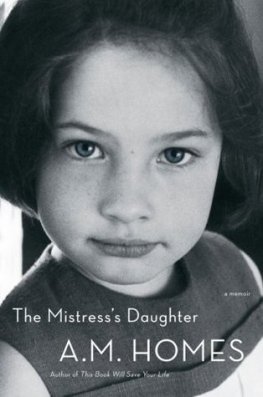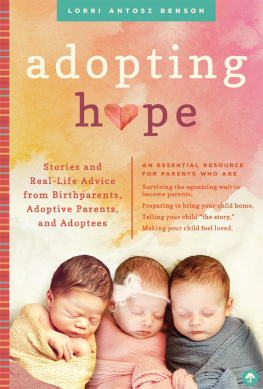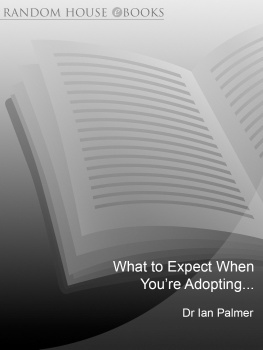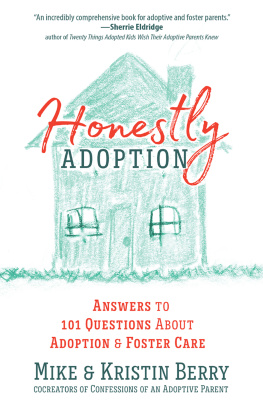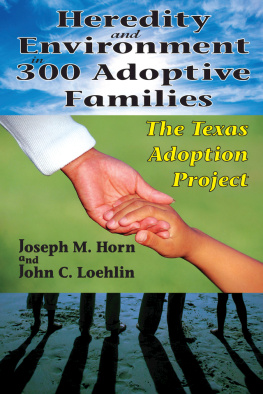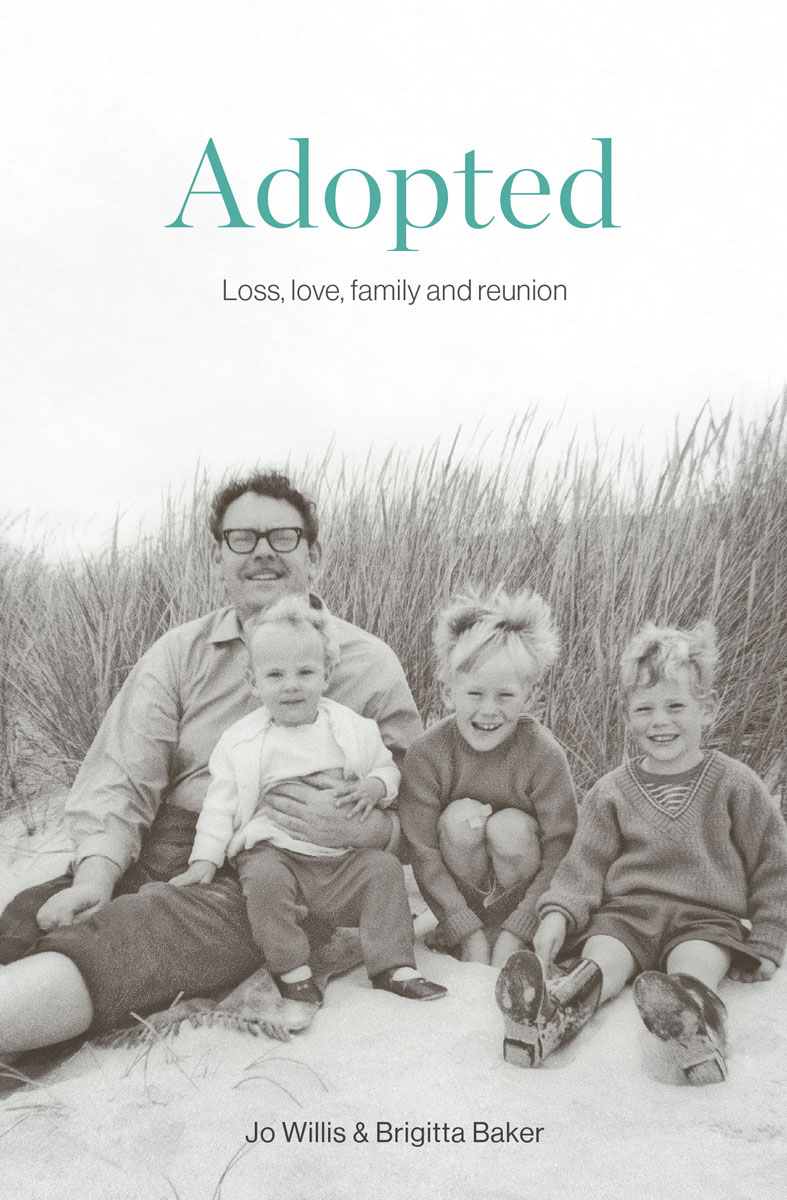

To Lawrie, my rock, and a constant source of love through the fog. To Will and Hollie, I am so proud of who you have become, and so grateful to you both for mirroring back to me my best parts and loving me despite my worst. I love you all this much with my whole heart.
JW
To Zo and Jade, who have been able to grow up in a country where young women are no longer pressured to give up their babies, and to Andrew, who held my hand through the entire journey.
BB
CONTENTS
11: I wanted you to have a family
Jan
12: The family that never was
Sue and Tony
Foreword
I first met Jo Willis at a Wellington conference on adoption and healing in 1997. She came with three other women who, like her and like me were adopted by strangers during the era of closed adoption, and had all subsequently made contact with their birth families. As she explains in this book, they had come together over two years to make sense of their lives in relation to adoption. Despite remarkably diverse backgrounds, adoption experiences, lifestyles and personal circumstances we shared the same core issues. The relief at being able to talk openly about adoption in a supportive environment was immense.
As they generously shared their discoveries, I sat at the back of the packed room with tears pouring down my face. It was the first time I had heard anyone talk about these deeply embedded issues, especially the recurrent feelings of struggling with relationships and never quite belonging anywhere.
These were vitally important insights which needed to be widely shared. So I was immensely pleased to discover Jos and Brigittas book online, and learn that Massey University Press was publishing a revised and extended print edition.
The contrasting adoption and reunion stories that Brigitta and Jo tell here are uniquely accompanied by the perspectives of birthparents, partners and children, as well as their own insightful commentaries. Not only intensely moving, they also achieve precisely what the authors aimed for: To illuminate the complexity, the emotional challenges and the legacy of adoption, especially along the path of reunion, both for adopted people and for their partners, parents, children, siblings, friends and extended whnau.
Their book demonstrates so effectively that no matter how difficult it can be, an awareness of the range of emotions being felt and a willingness to keep communicating and making decisions together can mean positive, long-term outcomes for all parties involved even when initially there may be a strong temptation to pull back.
Finally, and crucially: Although the relationships we have with others are critical, it is the relationship we end up having with ourselves that is most important It is not just about surviving; it is about thriving with the new self who has emerged.
Anne Else
February 2022
Prologue
I stepped out the back door of the house and hovered indecisively in the courtyard.
I could hear my husband speaking as he came down the steps not far from where I stood. He was answered by a cheerful sounding female voice.
God, thats her, I thought as waves of pure adrenaline flooded through me and my stomach began to churn. The realisation flashed through my mind that she sounded quite chatty and relaxed, then a stranger stepped into the courtyard and started walking towards me.
What should I do? Should I hug her? Was she a hugging sort of person? What was even appropriate behaviour in this bizarre situation? What should I say?
Before I could summon reason, I was in her arms, crying like a lost child and never wanting to let go. For several minutes a spell held us bound as we rocked gently together. It felt perfectly natural. There was no hesitation from her, no holding back, no stiffness. I have no idea what she said to me until she gently took hold of my shoulders and whispered, Let me look at you properly.
Introduction
When we tell our stories, we change the world. Well never know how our stories might change someones life our childrens, our friends, our parents, our partners or maybe that of a stranger who hears our story down the line or reads it in a book.
Bren Brown, The Gifts of Imperfection
For many adopted people, there is an almost insatiable hunger associated with not knowing who we are or where we came from. It is this hunger that drives many of us to search for our roots, to find the missing part of us, in the hope of finally having our questions answered. Being adopted does not make us unique in terms of the emotional challenges that affect our lives. Everyone has issues and limiting beliefs that affect the choices they make and the way they interact with others. Everyone has a story adoption is just one. What is uniquely challenging about adoption is that, for those of us raised in the closed adoption era, it is almost the first experience in life; it defines us from the earliest hours of our existence.
Unfortunately, setting out to find the answers to the questions can be terrifying. The idea of taking the first step towards contact with a birthparent is often overwhelming, and the lifelong fear of not being wanted, of not being welcomed with open and loving arms, forces many of us to hesitate, to delay, to procrastinate. The excuses are endless: What if my birthmother isnt interested? Perhaps I was just a mistake that everyone wants to forget? How will I cope if a phone gets slammed down on me? What if I contact the wrong person and make an idiot of myself?
Then there is the question that overrides all others: What will I find? This fear of the unknown, of uncovering some unpleasant truth that will make us wish we had left well alone, can be an insurmountable hurdle for many.
And behind this question lies another one that often goes unrecognised and unacknowledged. What are we actually looking for? Although the answer usually lies buried deep within our consciousness, many of us are looking for that safe haven, that loving connection that makes us feel unconditionally loved, secure and whole. A connection that allows us to be our true self and not feel rejected. A place where the grief and the sense of loss we have carried in our heart can be healed.
We are searching for the sanctity of our mothers arms.

Our aim in writing this book is to wake adopted people up to the impact adoption may have had on them, and to raise awareness and understanding about a topic that affects so many New Zealanders. It is the book we wish we had been able to read before setting out on our own paths to reunion a hand to hold through the process. At times it was extremely difficult to write. It forced us to confront truths and reveal details that ran the risk of hurting some of those closest to us. But it was also very healing. Our intention is not to cause pain, but rather to illuminate the complexity, the emotional challenges and the legacy of adoption for adopted people as we write our own stories
The book is in four parts. We begin with our own journeys from adoption to reunion with our respective birth families, to the post-reunion experiences. The third and fourth are a series of other perspectives: our birthmothers, one birthfather, as well as our partners, and all four of our children, giving more insight into the impact of the reunion journey on those whom are closest to us.
Next page

